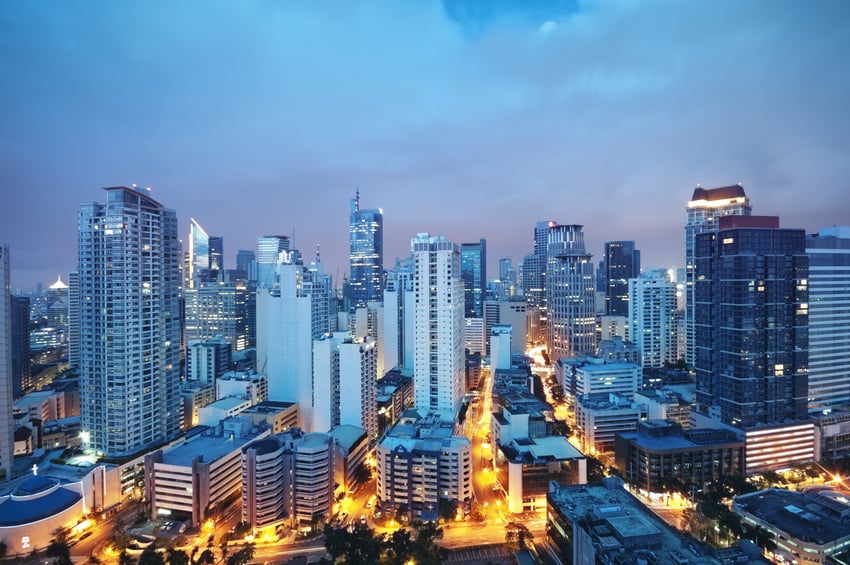In brief
To ensure the lawful processing of personal data in the use of closed-circuit television (CCTV)1 systems, the Philippine National Privacy Commission (NPC) released on 16 November 2020, Advisory No. 2020-04 on the “Guidelines on the Use of Closed-Circuit Television (CCTV) Systems” (Advisory). The Advisory guides personal information controllers (PICs) and personal information processors (PIPs) in the processing of personal data via CCTV systems used in public or semi-public places, as well as in responding to requests by the data subject or by third parties for disclosure of CCTV footage. The Advisory applies to CCTV systems with either video and audio capabilities or those which only record videos. Lawful surveillance conducted by law enforcement agencies and other government agencies, however, are not covered by the Advisory.
What the Advisory says
The Advisory confirms that the use of CCTV systems, including the capture, use, retention, disclosure and destruction of video and/or audio footage, is required to comply with the DPA, its Implementing Rules and Regulations, and the relevant issuances of the NPC. Said data processing is subject to the general principles of legitimacy of purpose, proportionality, and transparency.
- Legitimate purpose. Prior to the installation of a CCTV system, the purpose/s for the processing of personal data using such system must be clearly determined. The data processing may be permitted for the following purposes, except where these are overridden by the fundamental rights and freedoms of the data subject:
- Compliance with a law or regulation, where the same guarantees the protection of personal data;
- Security of properties and protection of vitally important interests of individuals;
- Ensure public order and safety; and
- Other legitimate interests.
PICs should identify an appropriate lawful basis for processing under the DPA and be able to provide such basis when required by the NPC.
While the use of CCTV systems for purely personal, family or household purposes is outside the ambit of the Advisory, the use thereof must still bear in mind the rights of every individual to privacy. However, if the CCTV faces outwards from an individual’s private property and it captures images of individuals beyond the boundaries of such property, the CCTV system may not be considered as used for purely personal, family or household purposes. Hence, the operator of such CCTV system in such case shall be deemed as a PIC and is required to comply with the DPA and the Advisory.
- Proportionality The PIC must evaluate whether the installation and operation of CCTV systems and the nature and kind thereof is necessary for its legitimate purpose, considering whether such purposes could be reasonably fulfilled by other less intrusive means.
In observance of the proportionality principle, the location and angles of the cameras must be carefully considered in order to ensure that the CCTV systems capture footage in a manner consistent with the DPA. CCTVs shall only be used to monitor the intended spaces, taking into consideration the purpose for monitoring. In this regard, the use of CCTVs in areas where individuals have a heightened expectation of privacy (i.e., fitting rooms, rest rooms, toilets, lactation or breastfeeding rooms, and other similar places) is prohibited.
CCTV systems shall record images that are of suitable quality to meet the purposes for which it was installed or intended. PICs should therefore implement reasonable and appropriate safeguards to ensure and maintain the confidentiality, integrity, and availability of the footage recorded and stored, including any associated meta data (i.e., time, date, and location), and to facilitate access requests for CCTV footage. Recorded CCTV footage must be encrypted.
- Transparency. PICs and PIPs shall provide readily visible and prominent CCTV notices which categorically informs the public that there is a CCTV system in operation. Such notice must be in clear, plain, and concise language. In addition, PICs and PIPs should also have a CCTV policy covering the following matters:
- Designation of an authorized personnel who are responsible for the CCTV system;
- CCTV notice/s and placement thereof;
- Procedure for requests for access to or copies of CCTV footage;
- Retention period of CCTV footage and manner of disposal/destruction thereof when the period of retention has lapsed;
- Security measures to be implemented for the protection of CCTV footage;
- Conduct of regular evaluation and audit of security measures and whether the use of the CCTV remains to be justified; and
- Process for the regular review and assessment of the CCTV policy and its revision, if necessary.
Disclosure of CCTV footage
PICs should establish policies and procedures in responding to requests of data subjects and/or third parties for access to and/or copies of CCTV footage. Such access/copy may be provided by the PIC to meet the legitimate interests of the requesting party, provided that the following 3-part test is considered:
- Purpose test – The existence of a legitimate interest must be clearly established, including a determination of what the particular processing operation seeks to achieve.
- Necessity test – The processing of personal information must be necessary for the purposes of the legitimate interest pursued by the PIC or third party to whom personal information is disclosed, where such purpose could not be reasonably fulfilled by other means; and
- Balancing test – The fundamental rights and freedoms of data subjects must not be overridden by the legitimate interests of the PICs or third party, considering the likely impact of the processing on the data subjects.
PICs are required to respond to requests for access within 5 working days from the date of the request. Requests for a copy of CCTV footage must be responded to within 15 working days, extendible for another 15 days if the request is complex or numerous. If the PIC denies the request, it should also inform the requesting party of the reason for the denial, which may be evaluated by the NPC upon filing of a complaint by the requesting party. The PIC may also impose reasonable charges to cover administrative costs in responding to requests for access/copy of CCTV footage, provided that they are not excessive as to discourage such requests.
Actions to Consider
Clients are advised to strictly comply with the foregoing Advisory to prevent any data privacy and security issues arising from the use of CCTV systems, as well as to retain the trust of its clients and employees. Clients which currently have or are intending to use CCTV systems are advised to implement the security measures listed in the Advisory for CCTV operations, including the conduct of a Privacy Impact Assessment (PIA), which considers the principles of lawful data processing in their CCTV operations. Conspicuous CCTV notices, a CCTV policy which covers the matters required in the Advisory, as well as an access request policy which states the forms, requirements, and procedures for data subject/third party requests for access/copy of CCTV footage, should all be in place for any and all CCTV operations of the company.




